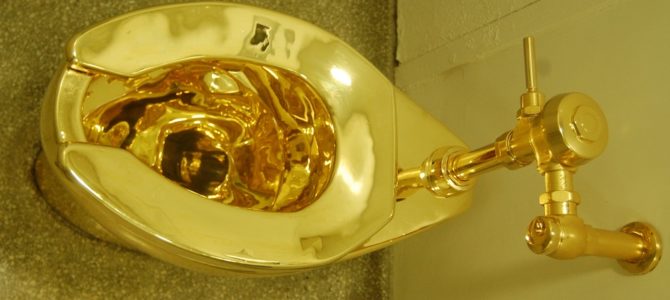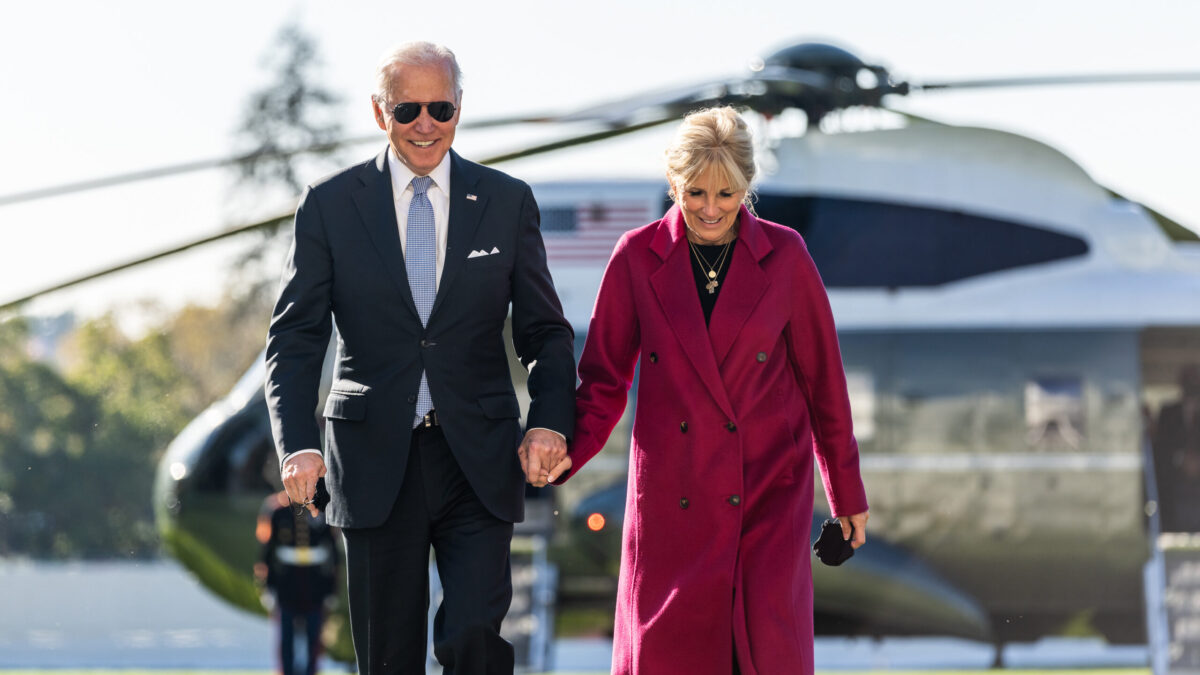
Ten months ago, the Trump administration released a preliminary budget that eliminated funding for the National Endowment for the Arts and 17 other independent federal agencies. That prompted outcries from the expected quarters.
The agency’s advocates across the land made the case that the arts are an integral part of American life, and not, pace certain conservatives, nothing more than a source of insults directed at half of the country. Museum heads weighed in. One was Richard Armstrong, director of the Solomon R. Guggenheim Museum and Foundation, who said,
The financial loss of support from the NEA and NEH would be catastrophic for a wide range of creative activities across the United States. Economically, the President’s proposal is without merit. Symbolically, it represents a historic and troubling repudiation of expression and the vital role that art plays in a curious, open, and engaged society.
Last fall, the Guggenheim made quite the symbolic gesture of its own. As reported last week in the Washington Post, the White House asked the museum to lend it an 1888 canvas by Vincent van Gogh in which a man and his dog trudge through a snow-covered, vibrant landscape. A smarmy reply from the Guggenheim explained to the White House’s Office of the Curator that “Landscape with Snow” was unavailable. It belongs to its Tannhauser Collection, whose pieces are generally prohibited from travel.
Instead, the museum offered a work of conceptual art by Maurizio Cattelan, a functioning toilet made from solid, 18-carat gold that had been installed at the museum during the prior year. “The work beautifully channels the history of 20th-century avant-garde art by referencing Marcel Duchamp’s famous urinal of 1917,” the email explained. It did not mention the title of the 2016 piece, which is “America.” Estimates reckon it cost a million dollars to manufacture.
The Plot Thickens
The author of the reply was Nancy Spector, the Guggenheim’s artistic director and Jennifer and David Stockman chief curator. It’s common for institutional positions like hers to be funded by, and therefore named after, major donors. David Stockman is well-known to the right as the author of “The Great Deformation” (2013), “Trumped! A Nation on the Brink of Ruin… And How to Bring It Back” (2016), and countless articles and blog posts endorsing fiscal conservatism.
Savor the irony: Spector’s job was made possible by the largesse of a man who, in 1981, as Ronald Reagan’s director of the Office of Management and Budget, tried to cut the NEA’s budget by half. He did not succeed in large part because of Reagan’s background as an actor. Reagan’s former colleagues in cinema and throughout the rest of the arts finally prevailed upon him.
Spector took to Instagram the day after the 2016 election to proclaim, “This must be the first day of our revolution to take back our beloved country from hatred, racism, and intolerance. Don’t mourn, organize.” The declaration captioned a photo of the American flag by Robert Mapplethorpe.
In 1989, the NEA-funded Corcoran Museum of Art canceled a Mapplethorpe exhibition rather than further jeopardize its federal appropriations. Mapplethorpe helped prompt the question about the NEA from Republican lawmakers that has never been adequately answered: what gives government the privilege to force a citizen to subsidize his own offense?
The Symbolism Is Real
I only criticize art that I have seen with my own eyes, and I’m not making an exception for Cattelan’s “America.” But I have seen other works by Cattelan, and this, by description, is consistent with their one-liner conceptual monotony. Just a factual account of the thing is symbolism enough, a debasing transformation of the golden door invoked by Emma Lazarus into the golden john.
Like all middlebrow art, it has an easy idea to go along with it. Like much middlebrow art that makes it into the museum, it was wildly popular. People lined up for hours inside the Guggenheim for the privilege of relieving themselves into it.
Then there’s the symbolism of Spector’s response to the White House. It too had an easy idea to go with it, and it played well to the choir. But to those of us not in the choir, it just looked churlish.
Spector, on behalf of the art world, had an opportunity to build a bridge to the administration. The museum could have signaled to the plurality of America that put Trump into power that it adheres to humanistic ideals that transcend the ephemeral spasms of the news cycle, that its idea of a “curious, open, and engaged society” is curious and open enough to engage across the boundaries of politics. The long tradition of museums lending to the White House is dignified in its indifference to partisanship, and the Guggenheim is injuring that dignity, not Trump.
Finally, it would have been classy to recognize that much of what goes on in the arts’ public sphere is made possible by the generosity of conservative donors, and the forbearance of conservative voters and lawmakers. (The final budget for FY2018 funds the NEA at 2017 levels.)
Classiness, in this case, would have meant communicating with the White House without a potty joke. It was an erudite, extremely expensive potty joke, but a potty joke all the same. Trump may be a vulgarian, but I’ll take an honest vulgarian over a vulgarian tarted up in trappings of high culture.









